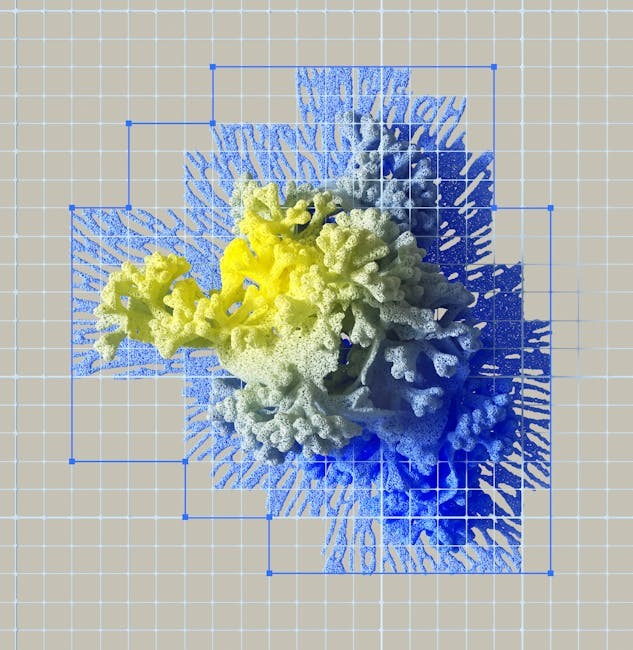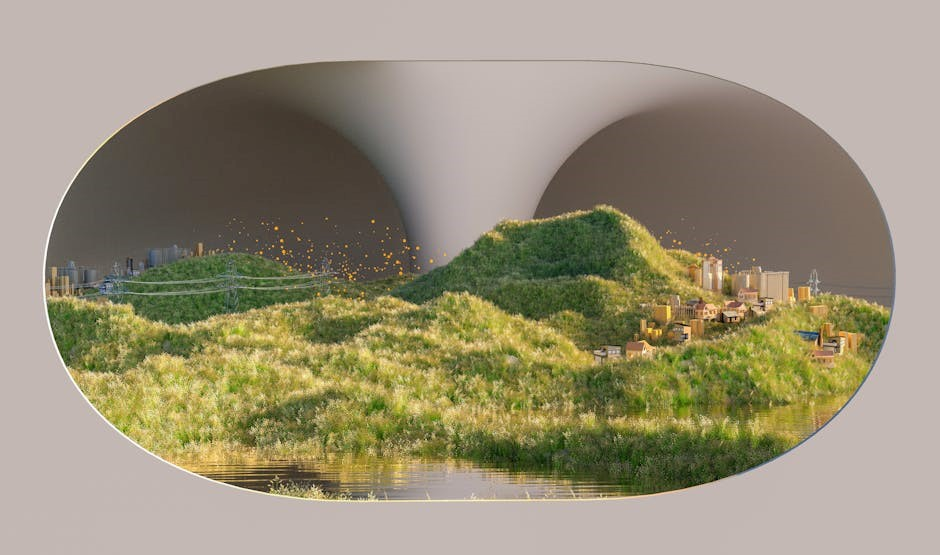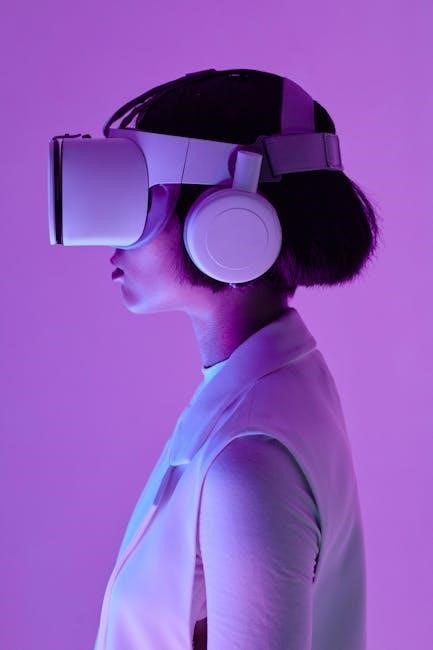
simulacra simulation pdf
Jean Baudrillard, a French sociologist and philosopher, is renowned for his theories on hyperreality and simulacra. His work explores how simulations shape modern culture and reality.
1.1. Biography of Jean Baudrillard
Jean Baudrillard was born in 1929 in Reims, France, to a family of peasant farmers. His early academic pursuits led him to study German, and he later became a teacher. Transitioning to sociology, Baudrillard developed a critical perspective on modern culture, particularly focusing on consumerism and media. His seminal work, Simulacra and Simulation, published in 1981, introduced concepts like hyperreality and simulacra, which reshaped postmodern thought. Baudrillard’s ideas gained global recognition, influencing fields from philosophy to cultural studies. He passed away in 2007, leaving behind a legacy of provocative theories that remain central to contemporary discussions on media, technology, and reality.
1.2. Key Concepts in Baudrillard’s Philosophy
Jean Baudrillard’s philosophy revolves around concepts like simulacra, simulation, and hyperreality. He argued that modern society has replaced reality with representations of reality, creating a world of simulations. Simulacra are copies without originals, while simulation is the process of generating these copies. Hyperreality refers to the state where simulations become indistinguishable from reality, dominating human perception. Baudrillard also introduced the concept of precession of simulacra, where models and signs precede and shape the real. His ideas critique how media, consumer culture, and technology construct meaning, often eroding the distinction between the real and the artificial.

Understanding Simulacra and Simulation
Baudrillard’s theory examines how simulacra and simulation replace reality with hyperreal constructs, where models and signs dominate perception, creating a world detached from the actual.
2.1. Definition of Simulacra
In Baudrillard’s theory, simulacra refer to copies or representations of reality that lack an original. They are not mere imitations but constructs that replace the real, creating a hyperreal world. Simulacra operate in media, advertising, and digital spaces, where models and signs dominate perception. Unlike traditional copies, simulacra do not reference an underlying truth; instead, they generate their own reality. This concept challenges the notion of an objective reality, as simulacra become indistinguishable from the real, leading to the erosion of meaning and the dominance of hyperreality in contemporary culture.
2.2. The Concept of Simulation
Simulation, as defined by Baudrillard, is a system of signs and models that generate a hyperreal world. It is not a mere representation of reality but a process that replaces reality with a constructed version. Simulation operates by creating a world of appearances, where the distinction between the real and the fake becomes irrelevant. Unlike traditional representation, simulation does not refer to an underlying truth; instead, it creates its own reality through self-referential models. This concept is central to understanding how media, technology, and consumer culture shape our perceptions, leading to a world dominated by hyperreality.
2.3. Hyperreality and Its Implications
Hyperreality, a term coined by Baudrillard, refers to a state where simulations and models of reality replace the real world. It is a realm where the imaginary and the symbolic dominate, creating a reality that is more “real” than reality itself. This concept has profound implications, as it challenges traditional notions of truth and authenticity. In hyperreality, media and technology construct experiences that are perceived as more meaningful than actual events. This shift reshapes how individuals interact with the world, leading to a society where consumption and spectacle are central. Hyperreality thus fundamentally alters human perception and culture.

The Structure of the PDF
The PDF begins with a table of contents, outlining key sections like “The Precession of Simulacra” and chapters on media, advertising, and hyperreality. It provides a clear guide to Baudrillard’s exploration of simulation and its cultural implications.
3.1. Table of Contents Overview
The table of contents in Baudrillard’s Simulacra and Simulation PDF outlines the structure of his arguments. It begins with “The Precession of Simulacra,” followed by chapters such as “History: A Retro Scenario,” “The China Syndrome,” and “Apocalypse Now.” These sections delve into diverse themes, including media influence, consumer culture, and the dissolution of reality. The table also lists chapters like “The Beaubourg Effect” and “Absolute Advertising,” which critique modern institutions. Each entry provides a roadmap for understanding Baudrillard’s concepts, ensuring readers can navigate his complex exploration of hyperreality and simulation.
3.2. Key Sections and Their Significance
The PDF of Simulacra and Simulation is divided into key sections that explore Baudrillard’s central ideas. Chapters like “The Precession of Simulacra” introduce the concept of simulacra as entities without originals, shaping reality. “History: A Retro Scenario” examines history as a simulation, while “The Implosion of Meaning in the Media” critiques how media saturation erodes truth. These sections are crucial for understanding Baudrillard’s theory of hyperreality and its implications for culture, politics, and society. Each chapter builds on the previous, creating a comprehensive critique of modernity and the role of simulations in shaping human perception.

The Precession of Simulacra
Baudrillard argues that simulacra precede reality, shaping perceptions through hyperreal models. This precession erodes distinctions between real and simulated, creating a world dominated by simulations.
4.1. The Simulacrum as a Concept
The simulacrum, as defined by Baudrillard, is a copy without an original, a representation that replaces reality. It is not merely an imitation but a construct that masks the absence of truth. Simulacra operate in a hyperreal world where models and signs dominate, creating a reality that is more real than reality itself. This concept challenges traditional notions of authenticity, suggesting that meaning is derived from simulations rather than actual events or objects. Baudrillard’s theory posits that simulacra have become integral to modern society, shaping perceptions and interactions in ways that blur the line between the real and the simulated.
4.2. The Relationship Between Simulation and Reality
Baudrillard argues that simulation and reality are intricately intertwined, with simulation often supplanting the real. He posits that in a hyperreal world, simulations distort our understanding of reality, rendering it secondary to the models and signs that represent it. The territory no longer precedes the map; instead, the map generates the territory. This inversion means that simulations shape perceptions, creating a reality that is more real than reality itself. Baudrillard contends that simulation is not merely an imitation but a genetic and nuclear operation that replaces the real with signs and models, leading to the erosion of meaning and the dominance of hyperreality in modern society.

Historical and Cultural Context
Baudrillard’s work emerged in the late 20th century, a period marked by the rise of consumer culture, media saturation, and the digital age, influencing his concepts of hyperreality.
5.1. The Role of Media in Shaping Reality
The media plays a pivotal role in shaping reality by creating hyperreal environments that often replace actual experiences. Baudrillard argues that media simulations, such as advertisements and digital content, construct a world of signs and models that mask the absence of a tangible reality. This process leads to the erosion of meaning, as people increasingly interact with mediated representations rather than direct experiences. Media’s influence extends to politics, culture, and daily life, fostering a society where the simulated becomes indistinguishable from the real. This phenomenon highlights how media shapes perceptions, often blurring the line between truth and illusion in the digital age.
5.2. The Impact of Advertising and Consumer Culture
Advertising and consumer culture exemplify Baudrillard’s concept of simulacra, where images and signs replace authentic experiences. Advertisements create hyperreal desires, shaping perceptions of identity and lifestyle. Consumer culture thrives on these simulations, fostering a society obsessed with brands and commodities. Baudrillard argues that this system erodes meaning, as products are marketed not for their utility but for their symbolic value. The proliferation of hyperreal images in media and advertising perpetuates this cycle, leading to a world where consumption is driven by illusion rather than reality. This phenomenon underscores how simulacra dominate modern life, reshaping values and priorities in a hyperconsumerist society.

The Implications of Simulation on Society
Simulation reshapes societal perceptions by prioritizing hyperreal images over authentic experiences, fostering a culture increasingly detached from reality and focused on constructed social and cultural models.
6.1. The Erosion of Meaning in the Digital Age
In the digital age, simulation dominates, leading to the erosion of meaning as hyperreal images and models replace authentic experiences. Digital platforms, saturated with simulacra, prioritize sensationalism over truth, creating a void where meaning is lost. This phenomenon, as Baudrillard predicts, results in a society detached from reality, where symbols and representations overshadow genuine connections. The proliferation of digital content accelerates this process, fostering superficial engagement and diminishing the depth of human understanding. Consequently, the digital age becomes a realm where meaning is constantly negotiated, often to the detriment of authenticity.
6.2. The Role of Science Fiction in Understanding Simulation
Science fiction serves as a powerful lens to understand Baudrillard’s concept of simulation. Films like The Matrix and Blade Runner illustrate hyperreality, where simulations replace authentic experiences. These narratives depict worlds where reality is constructed by models and signs, aligning with Baudrillard’s ideas. By exploring dystopian futures dominated by simulacra, science fiction helps audiences grasp the implications of living in a hyperreal world. It also reflects Baudrillard’s notion of the erosion of meaning, as characters often struggle to distinguish reality from illusion. Thus, science fiction bridges theory and popular culture, making Baudrillard’s complex ideas more accessible and relatable to broader audiences.

The Legacy of Baudrillard’s Work
Jean Baudrillard’s work significantly influenced postmodern thought, particularly through his concepts of hyperreality and simulacra. His ideas remain relevant in contemporary discussions on media, culture, and technology.
7.1. Influence on Postmodern Thought
Jean Baudrillard’s work has profoundly shaped postmodern thought, particularly through his concepts of hyperreality and simulacra. His ideas challenged traditional notions of reality, arguing that simulations and models now dominate human experience. Baudrillard’s theories have influenced fields such as cultural studies, media theory, and philosophy, offering new perspectives on how society constructs meaning. His critique of consumer culture and the role of media in shaping perceptions has become foundational in postmodern discourse. Additionally, his ideas have inspired thinkers in various disciplines, from sociology to film studies, and continue to resonate in contemporary debates about technology, identity, and reality.
7.2. Relevance in Contemporary Discussions
Jean Baudrillard’s theories remain highly relevant in contemporary discussions, particularly in analyzing digital culture, social media, and virtual reality. His concept of hyperreality resonates with today’s world, where simulations often replace direct experiences. The rise of AI, deepfakes, and immersive technologies aligns with his ideas about the blurring of reality and simulation. Baudrillard’s work also informs critiques of consumer culture, advertising, and the media’s role in shaping perceptions. His ideas are frequently referenced in debates about post-truth politics, fake news, and the erosion of meaning in the digital age, making his work a cornerstone of modern philosophical and cultural analysis.


Leave a Reply
You must be logged in to post a comment.